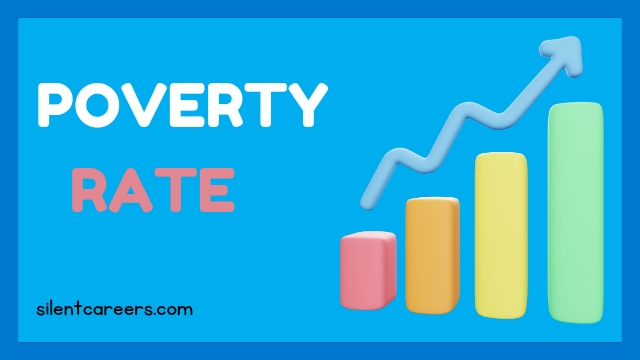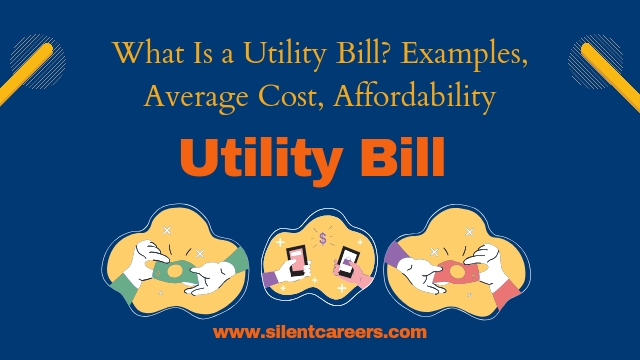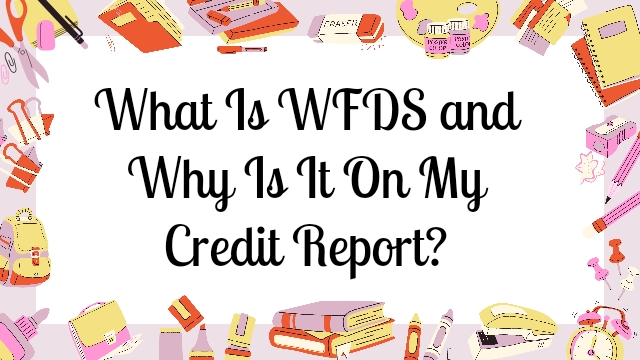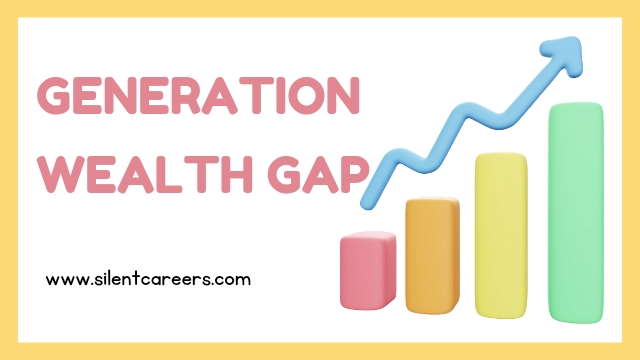
It sounds like you’re asking about poverty rate s in a particular context or location around the 40-year mark. If you’re referring to a specific country or region, could you provide more details? Generally, poverty rates can vary significantly depending on the country and the time period in question.
For instance:
- In the United States, looking at data from around 1980, the poverty rate was roughly 13-15%. This fluctuated in the following decades, influenced by economic conditions and policy changes.
- Globally, in the early 1980s, the extreme poverty rate was quite high, but substantial progress has been made since then, with a dramatic reduction in extreme poverty rates over the past 40 years.
If you specify a particular country or region, I can provide more detailed historical data for that area.

Poverty Rates / Percentage by U.S. State
Poverty rates in the U.S. vary significantly by state, reflecting differences in economic conditions, cost of living, and social services. Here’s a general overview of how poverty rates can differ across states:
Highest Poverty Rates:
States with the highest poverty rates often include:
- Mississippi
- Louisiana
- New Mexico
- Arkansas
- West Virginia
These states typically have poverty rates above 17%.
Read more: Understanding the National Debt | Debt chart us
Lowest Poverty Rates:
States with the lowest poverty rates often include:
- New Hampshire
- Maryland
- Utah
- Minnesota
- Hawaii
These states generally have poverty rates below 10%.
Factors Influencing Poverty Rates:
- Cost of Living: States with a lower cost of living often have higher poverty rates because wages tend to be lower.
- Economic Opportunities: States with diverse and strong economies generally have lower poverty rates.
- Social Services: States that offer more robust social safety nets can have lower poverty rates.
For the most current and detailed statistics, it’s best to consult sources like the U.S. Census Bureau or recent reports from organizations that analyze economic data across states.
The 10 States With the Highest Poverty Rates
The states with the highest poverty rates in the U.S. are often concentrated in the South. As of 2024, Mississippi has the highest poverty rate, with 18.8% of its population living below the federal poverty line. Following Mississippi are Louisiana (17.8%), New Mexico (16.8%), West Virginia (15.8%), and Arkansas (15.2%). These states also tend to have lower median household incomes and higher rates of unemployment and lower educational attainment, which contribute to their high poverty levels【61†source】【63†source】.
Poverty rates across the U.S.
Poverty rates in the United States vary widely across states, reflecting differences in economic conditions, cost of living, and social policies. As of the most recent data:
States with the Highest Poverty Rates:
- Mississippi: 18.8% of the population lives below the poverty line, the highest rate in the country.
- Louisiana: 17.8%
- New Mexico: 16.8%
- West Virginia: 15.8%
- Arkansas: 15.2%
These states are often characterized by lower median household incomes, higher unemployment rates, and lower educational attainment levels, which contribute to their higher poverty rates【61†source】【63†source】.
States with the Lowest Poverty Rates:
- New Hampshire: Around 7.2%, the lowest poverty rate in the nation.
- Maryland: Approximately 9%
- Utah: About 9.5%
States with lower poverty rates often benefit from stronger economies, higher wages, and better access to education and healthcare.
National Context:
Overall, the national poverty rate in the U.S. fluctuates around 11-12%, but this average hides significant disparities between states. Factors such as unemployment, housing costs, access to education, and healthcare heavily influence these rates.
For the most up-to-date and detailed statistics, the U.S. Census Bureau’s reports on poverty are an excellent resource. They provide comprehensive data, including breakdowns by state, age, race, and household type.
What is poverty and how is it defined?
Poverty is a condition where individuals or groups lack the financial resources necessary to meet basic living needs, such as food, shelter, clothing, healthcare, and education. It is a complex issue influenced by various factors including economic conditions, social policies, and personal circumstances.
How Poverty is Defined:
- Absolute Poverty:
- This is a fixed threshold typically defined by a specific income level below which individuals or families are unable to meet basic needs. For example, the World Bank defines extreme poverty as living on less than $2.15 per day.
- In the U.S., the federal poverty line is an absolute measure used to determine eligibility for various social services. It is calculated based on the cost of a minimal food diet in 1963 and adjusted for inflation. For example, in 2023, the poverty guideline for a single individual was $14,580 annually.
- Relative Poverty:
- This concept is based on the economic conditions of a specific society. It considers individuals or families to be in poverty if their income is significantly less than the median income within that society, often defined as earning less than 50% or 60% of the median income.
- Relative poverty highlights inequalities within a society and is often used in discussions about social exclusion and inequality.
- Multidimensional Poverty:
- This approach considers various factors beyond income, such as access to education, healthcare, housing, and employment. The Multidimensional Poverty Index (MPI), developed by the United Nations Development Programme (UNDP) and the Oxford Poverty & Human Development Initiative (OPHI), measures poverty by looking at multiple deprivations that people experience in their daily lives.
Measurement in the U.S.:
In the United States, poverty is primarily measured using the Official Poverty Measure (OPM) and the Supplemental Poverty Measure (SPM):
- OPM: The traditional measure based on pre-tax cash income and the federal poverty threshold.
- SPM: This measure takes into account additional factors like tax payments, government assistance programs, and regional differences in the cost of living, providing a more nuanced view of poverty.
Impact of Poverty:
Poverty affects nearly every aspect of life, including health, education, and employment opportunities. Individuals living in poverty are more likely to experience food insecurity, inadequate housing, poor health outcomes, and limited access to quality education and employment opportunities.
Poverty is a multifaceted issue with both economic and social dimensions. Defining and measuring it accurately is crucial for developing effective policies and interventions aimed at reducing poverty and its impacts on society.
How poverty rates change in each U.S. region
Poverty rates in the U.S. vary significantly by region, reflecting differences in economic conditions, cost of living, and access to resources. Here’s an overview of how poverty rates change across different U.S. regions:
**1. *The South*:
- Highest Poverty Rates: The Southern U.S. consistently has the highest poverty rates compared to other regions. States like Mississippi, Louisiana, Arkansas, and West Virginia are often at the top of the list for the highest poverty rates. Factors contributing to this include lower median incomes, higher unemployment rates, and lower levels of educational attainment.
- Rural Poverty: Many Southern states have large rural areas where poverty is more prevalent due to limited access to jobs, education, and healthcare.
**2. *The West*:
- Mixed Poverty Rates: The Western U.S. has a mix of both high and low poverty rates. States like New Mexico and Arizona have higher poverty rates, often due to large rural and Native American populations with limited access to resources.
- Urban vs. Rural Divide: In states like California, the poverty rate is higher in rural areas and certain urban neighborhoods, even though the state overall has a robust economy. High housing costs in urban areas can also push more people below the poverty line.
**3. *The Midwest*:
- Moderate Poverty Rates: The Midwest generally has moderate poverty rates, with states like Ohio and Michigan experiencing higher rates due to economic shifts, such as the decline in manufacturing jobs.
- Urban Poverty: In some Midwestern cities, particularly those affected by deindustrialization, poverty rates can be quite high, even if the overall state rate is moderate.
**4. *The Northeast*:
- Lower Poverty Rates: The Northeastern U.S. typically has lower poverty rates. States like New Hampshire, Massachusetts, and Connecticut have some of the lowest poverty rates in the country.
- Economic Disparity: While overall poverty rates are low, there can be significant disparities within states, especially between affluent urban areas and poorer rural or inner-city areas.
Factors Contributing to Regional Differences:
- Economic Structure: Regions with economies based on industries that have declined, like manufacturing in the Midwest, often have higher poverty rates.
- Cost of Living: High living costs, particularly in parts of the West and Northeast, can lead to higher poverty rates despite higher average incomes.
- Access to Education and Healthcare: Regions with better access to education and healthcare tend to have lower poverty rates.
The Southern region consistently faces the highest poverty rates in the U.S., while the Northeast tends to have the lowest. The Midwest and West have mixed outcomes, with both high and low poverty areas depending on local economic conditions and demographics. These regional disparities are shaped by a complex interplay of economic, social, and political factors.
For more detailed and updated statistics, reports from the U.S. Census Bureau and research organizations like the Urban Institute can provide further insights【63†source】【61†source】.
COVID-19 pandemic poverty rates
The COVID-19 pandemic had a profound impact on poverty rates in the United States and globally. Here’s a look at how the pandemic influenced poverty:
Impact in the United States:
- Initial Increase:
- In 2020, the poverty rate in the U.S. increased due to the economic disruptions caused by the pandemic. Millions of Americans lost their jobs or had their work hours reduced, leading to a spike in poverty.
- The U.S. Census Bureau reported that the official poverty rate in 2020 was 11.4%, up from 10.5% in 2019. This was the first increase in the poverty rate after five consecutive years of decline.
- Government Intervention:
- Government stimulus payments, expanded unemployment benefits, and other aid programs helped to mitigate the rise in poverty. The Supplemental Poverty Measure (SPM), which takes into account government assistance, showed a more nuanced picture. According to the SPM, poverty actually decreased in 2020 to 9.1%, down from 11.8% in 2019, due to these interventions.
- The American Rescue Plan Act of 2021 further reduced poverty, especially child poverty, by providing direct cash payments, expanding the Child Tax Credit, and increasing food assistance.
- Disproportionate Impact:
- The pandemic disproportionately affected low-income workers, particularly in service industries like hospitality and retail. Minority groups, including Black and Hispanic Americans, experienced higher rates of job loss and poverty.
- Women were also disproportionately impacted, particularly those with children, due to the challenges of balancing work and childcare during school closures.
Global Impact:
- Global Poverty Increase:
- The World Bank estimated that the pandemic pushed between 119 and 124 million people into extreme poverty in 2020, marking the first increase in global extreme poverty in over 20 years.
- Developing countries, particularly those with high levels of informal employment and limited social safety nets, were hit hardest.
- Long-term Consequences:
- The economic recovery from the pandemic has been uneven, with some regions recovering faster than others. The long-term impact on global poverty will depend on the speed and inclusiveness of economic recovery, vaccine distribution, and continued government support.
While the COVID-19 pandemic initially led to a significant increase in poverty rates, especially in the U.S., government interventions played a crucial role in mitigating the worst effects. Globally, the pandemic reversed years of progress in reducing extreme poverty, with the long-term impact still unfolding (World Population Review) (World Population Review).
States with the highest poverty rates over time
Poverty rates in U.S. states have fluctuated over time due to various economic, social, and policy changes. However, certain states consistently report higher poverty rates compared to others. Here’s a look at the states with the highest poverty rates over time:
Consistently High Poverty States:
- Mississippi:
- Mississippi has often been the state with the highest poverty rate. For decades, it has struggled with economic challenges such as low median income, high unemployment, and limited access to education and healthcare.
- Over time, its poverty rate has often hovered around 18-20%.
- Louisiana:
- Louisiana has also consistently had one of the highest poverty rates in the U.S. Contributing factors include economic disparities, high unemployment, and the impact of natural disasters like Hurricane Katrina, which had long-term effects on the state’s economy.
- Poverty rates in Louisiana have generally been in the 17-19% range.
- New Mexico:
- New Mexico often ranks high in poverty rates due to its large rural population, high unemployment, and significant Native American population, which has faced historical and ongoing economic challenges.
- The state’s poverty rate has typically ranged between 16-18%.
- West Virginia:
- West Virginia has consistently high poverty rates due to a declining coal industry, low educational attainment, and health issues. The state’s poverty rate has typically been around 15-17%.
- Economic transition challenges have kept the state in this position over time.
- Arkansas:
- Arkansas often appears on the list of states with the highest poverty rates, affected by similar issues as other Southern states: lower wages, higher unemployment, and lower levels of education.
- Its poverty rate generally falls between 14-16%.
Trends Over Time:
- The South: The Southern U.S. has historically had higher poverty rates compared to other regions. States like Alabama, Kentucky, and Tennessee also often appear in lists of high-poverty states.
- Economic Changes: Economic recessions, such as the Great Recession (2007-2009) and the COVID-19 pandemic, temporarily increased poverty rates across many states, with some of the highest increases seen in states already struggling economically.
- Impact of Policies: Federal and state policies, including welfare reform, healthcare expansion, and economic development initiatives, have influenced poverty rates over time, sometimes leading to slight reductions in poverty.
Current Data:
- The most recent data from 2024 still shows Mississippi, Louisiana, New Mexico, Arkansas, and West Virginia among the states with the highest poverty rates (World Population Review) (World Population Review).
While poverty rates can fluctuate due to economic cycles and policy changes, certain states, particularly in the South, have consistently faced higher levels of poverty due to structural economic challenges. Addressing these issues requires targeted policy interventions and long-term economic development strategies.
States with the lowest poverty rates over time
Over time, certain U.S. states have consistently reported lower poverty rates due to factors such as stronger economies, higher median incomes, better education systems, and more extensive social safety nets. Here are the states that have historically had the lowest poverty rates:
Consistently Low Poverty States:
- New Hampshire:
- Poverty Rate: New Hampshire has often had the lowest poverty rate in the country. The state benefits from a strong economy, high median household income, and low unemployment rates.
- Rate Range: Over the years, the poverty rate in New Hampshire has typically been around 7-8%.
- Maryland:
- Poverty Rate: Maryland consistently ranks among the states with the lowest poverty rates, thanks to its high median income and proximity to Washington, D.C., which provides a robust job market, particularly in government and technology sectors.
- Rate Range: The poverty rate in Maryland has usually been around 8-10%.
- Connecticut:
- Poverty Rate: Connecticut’s poverty rate is low, supported by a high cost of living that correlates with higher incomes. The state’s economy is driven by finance, insurance, and healthcare industries.
- Rate Range: Poverty rates in Connecticut have typically ranged from 8-10%.
- Massachusetts:
- Poverty Rate: Massachusetts benefits from a diverse economy with strengths in education, healthcare, and technology. The state has also invested heavily in social services, contributing to lower poverty rates.
- Rate Range: The poverty rate has generally been around 8-10%.
- Minnesota:
- Poverty Rate: Minnesota has consistently low poverty rates due to its strong economy, high employment levels, and investments in education and social services.
- Rate Range: Poverty rates in Minnesota have typically been around 8-10%.
Trends Over Time:
- Northeastern States: The Northeast, including states like New Hampshire, Massachusetts, and Connecticut, has historically maintained lower poverty rates compared to other regions, primarily due to strong economies, high levels of educational attainment, and robust social services.
- Policy Impact: States with extensive social safety nets, progressive taxation, and investments in public services tend to have lower poverty rates. For example, states with expanded Medicaid under the Affordable Care Act saw slower increases in poverty during economic downturns.
- Urban vs. Rural Divide: Even in states with low overall poverty rates, there can be significant disparities between urban and rural areas. Urban areas often benefit more from economic growth, while rural areas may face higher poverty levels.
Current Data:
- As of the most recent data (2024), states like New Hampshire, Maryland, and Massachusetts continue to report some of the lowest poverty rates in the nation, maintaining their status over time (World Population Review) (World Population Review).
States with consistently low poverty rates generally share characteristics such as strong economies, high educational attainment, and well-developed social safety nets. These factors help sustain lower poverty rates over time, despite economic fluctuations.
How poverty affects different demographics
Poverty affects different demographic groups in the U.S. in unique and often disproportionate ways due to a combination of economic, social, and structural factors. Here’s a breakdown of how poverty impacts various demographics:
1. Race and Ethnicity
- African Americans and Hispanics: These groups face significantly higher poverty rates compared to White and Asian Americans. For instance, as of 2023, about 19.5% of Black Americans and 17.2% of Hispanics were living in poverty, compared to 8.1% of White Americans (World Population Review). Historical factors, such as systemic racism and discrimination in education, housing, and employment, play a crucial role in these disparities.
- Native Americans: Native American communities often experience some of the highest poverty rates, frequently exceeding 20%. Geographic isolation, lack of access to resources, and historical marginalization contribute to the persistent poverty in these communities (World Population Review).
2. Gender
- Women: Women are more likely to experience poverty than men, with single mothers particularly vulnerable. In 2023, the poverty rate for single-mother households was around 23.4%, almost double the national average (World Population Review). Contributing factors include the gender wage gap, higher childcare costs, and a greater burden of unpaid caregiving responsibilities.
- Elderly Women: Older women are also at higher risk of poverty due to lower lifetime earnings, reduced access to pensions, and longer life expectancy, which can deplete savings (World Population Review).
3. Children
- Children: Children, especially those in single-parent families, are one of the most vulnerable groups to poverty. In 2023, about 16.1% of children in the U.S. lived in poverty (World Population Review). Growing up in poverty can lead to long-term disadvantages, including poorer health, lower educational achievement, and a higher likelihood of continuing the cycle of poverty.
4. Geographic Location
- Urban vs. Rural: Poverty rates are generally higher in rural areas than in urban ones due to factors like limited access to jobs, healthcare, and education. The decline of traditional industries such as agriculture and manufacturing also plays a role in rural poverty (World Population Review).
- Regional Differences: The Southern U.S. typically has higher poverty rates than the Northeast or Midwest, influenced by economic structures, state policies, and historical contexts.
5. Disability
- People with Disabilities: Individuals with disabilities face a higher risk of poverty due to barriers to employment, higher medical costs, and limited access to support services. The poverty rate for working-age adults with disabilities was about 26% in 2023, almost double that of non-disabled individuals (World Population Review).
6. Age
- Elderly: While poverty among the elderly has decreased due to Social Security, certain groups, especially elderly women and minorities, still experience higher poverty rates. Older Black and Hispanic women have significantly higher poverty rates than the national average for seniors (World Population Review).
Poverty affects different demographic groups in varied ways, often exacerbating existing inequalities. Addressing poverty effectively requires policies tailored to the unique needs of these groups, focusing on education, healthcare, employment, and social safety nets (World Population Review) (World Population Review).
Poverty rate over time
The poverty rate has fluctuated over time and can vary widely depending on the country or region you’re referring to. Here’s a general overview of trends in poverty rates:
- Global Trends: Over the past few decades, the global poverty rate has generally decreased. For example, according to World Bank data, the percentage of people living on less than $1.90 a day (the international poverty line) has declined significantly since the 1990s. However, this progress can be uneven, with some regions experiencing slower reductions or even increases in poverty rates due to various factors such as economic downturns or conflicts.
- United States: In the U.S., the poverty rate has experienced fluctuations. After a general decline from the 1960s through the 1990s, it saw an increase during the 2008 financial crisis. The rate then fell in the following years but has been impacted by factors like the COVID-19 pandemic, which caused temporary increases in poverty rates.
- Developing Countries: Many developing countries have seen substantial reductions in poverty rates over the past few decades due to economic growth, improvements in education, and social programs. However, challenges remain, and some areas are still struggling with high poverty rates due to political instability, conflict, and other issues.
For more specific and current data, you might want to check sources like the World Bank, IMF, or national statistics agencies.








